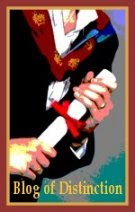
Parks across the country are trying to accomodate city-dwelling dogs. In fact, the oldest park in the country—Boston Common—is experimenting with leash-free zones and hours in downtown Boston. The Common, first established around 1634, began as a place for livestock grazing and military encampments. At that time, there were all sorts of dogs around. Later, it was used as a site for public executions. As my mom likes to remind me, one of our ancestors was hung there for being a witch. Actually, she was a Quaker—but Colonial Puritans don’t like splitting such theological hairs. Today, Boston Common is one of the most-visited examples of urban nature in North America. It’s also near Henry David Thoreau’s old stomping grounds. I decide we have to visit.
Ari remains surprisingly subdued for most of the trip. But once we get about 20 miles outside of Boston, she’s alert and eager. She paces between the front and back seat, trying to take in the thickening traffic and tall buildings. Eventually, she drapes herself over the driver’s seat, resting her front paws on my forearm and sticking her snout out the cracked window. We pass a Massachusetts state trooper, and I wonder if we can be ticketed for ungainly dog poses.
The driving directions to Boston Common take us through the narrow streets of Chinatown. We’ve encountered a very different kind of gorge here: the granite rock walls are replaced by sky-scrapers and the white water with a constant torrent of people. There’s much to see and smell, and the pup does her best to catalogue it all. She’s never been in a city before, and I suspect it overwhelms and intimidates her. As if to prove me right, she stays close to me after we park the car, crouching against my legs and looking around nervously. The arrogant teenager has been humbled. It’s my meek puppy here with me now. Still, I hold her leash extra tight and double check the clasp: if she gets away now, I doubt I’ll ever see her again.
As we enter the Common, we are greeted by a deafening chorus of, Oh, look, a DOG!!!, sung by about 200 grade school children. Ari smiles nervously and wags her tail, but she continues to lean against me. Still, she’s intrigued by the kids, who are all dressed in identical orange shirts and bright yellow hats, complete with exaggerated bill and lots of orange feathers. “We’re ducks,” one of them explains. “Quack,” she adds for emphasis. “Quack! Quack!!”
Ari gives one of her half-barks, half-whines. She’s not sure how she’s supposed to respond to this giant flock. They look like pals, but they’re not behaving like any other critter she has encountered. The children quack again and waddle towards the duck pound.
We say goodbye and walk deeper into the Common, passing a group of three college-aged guys. As we pass them, I hear one tell his buddies that a woman just walked by with a blue-eyed fox on a leash. Urban definitions of nature, I am quickly learning, are clearly relative.
That’s even true when it comes to what constitutes a park. Bostonians have a conflicted relationship with their Common. Some scorn it, calling it the city’s largest—and dirtiest—vacant lot. Others relish its verdant fields and shady groves, calling it an oasis in an otherwise crowded metropolis. There’s something to both interpretations. The Common is worn in places, and it’s certainly not pristine. But it’s also lovely in its green coolness and mature foliage. I marvel at the height of its elms and oaks—home to many of the same bird species we have back in our pine woods. And at this hour of the day—barely 10:00 a.m.—there’s a peacefulness to the place also very much like our town forest.
We watch as a monarch butterfly (Danaus plexippus) alights upon a park bench. Ari is momentarily transfixed, but is soon distracted by an enormous gray squirrel (Sciurus niger), who scurries up a tree. Much larger and less bellicose than its red cousin, this squirrel can only be described as succulent with its beefy flanks and round belly. I can hardly blame Ari when she lunges at it. Somehow, the rotund squirrel retains enough rodent nimbleness to race halfway up the tree trunk when pursued. Ari tries to follow, getting about two feet up before remembering 1) she is attached to a leash and 2) she cannot climb. She looks like the Looney Tunes coyote, suspended in midair before plummeting back to the ground. Still, she’s regained some of her confidence: having forgotten about the city surrounding us, she drags us merrily from tree to tree in search other mega-squirrels.
Our serpentining course takes us near the Visitor’s Center, where two unleashed little white dogs frolic in a sunny spot of the Common, chasing each other and a few dry leaves.
“Did you see that,” asks a voice behind me. “The rat population is really growing!”
I turn and find myself facing a young man dressed in colonial attire, including a large felt hat and white stockings. He introduces himself as Patrick Gilson, an 18th-century Irish highwayman turned Boston butcher.
“There’s only one highway in Colonial Boston,” he explains. “So I wasn’t getting a lot of work. The eighteenth-century meat industry is more profitable. But less rewarding.”
He asks if we would like to purchase a tour of the Commons, but I decline and explain our specific reason for visiting.
“I call it caninaturalism,” I say.
“Boston is a great dog town,” he insists, rat comment aside. “We’re really dog friendly—in all the neighborhoods.”
When he’s not a colonial meat man, ‘Patrick’ is Chad Clayton, method actor and sometimes waiter. “We have a lot of certified helper dogs visit my restaurant,” he says. “They’re our favorite customers. You see them all over downtown, too.”
I remind him that we’re here for urban nature. “What about the Common,” I ask. “Is it nature?”
“Nature or natural?” he asks.
“Nature or natural?” he asks.
A philosopher highwayman. I’m impressed. “How about the first one?”
“Well,” he says. “there’s nature here, isn’t there?”
I can’t argue with that.
He asks what we’ve observed.
I’m embarrassed to admit that my sensitive, astute dog—the one who noticed the first trout lilies of the season, who adores lichens and finds hidden woodpecker chicks—has eyes only for squirrels.
“You mean falcon food.”
Huh?
Patrick-Chad tells me that the Common boasts a resident peregrine falcon (Falco peregrinus), famous for swooping up squirrels in front of sensitive tourists. He says he’s also seen owls, turtles, and a coyote while working as a guide.
I ask if he’s had much interaction with dogs in the Common.
“Well-behaved ones can run around off-leash,” he says. “I think that’s good. It adds to the atmosphere. Back in the day, dogs were here all the time. So were sheep and cattle.”
“Do you get many dogs on your tours?”
“Actually, I’ve never had a dog on a tour. But I like to end each one with a little dog story. Do you want to hear it?”
Of course I do.
“Well, leading up to the Revolution, Boston grew so quickly and got so dirty that colonists tried to ban all dogs under 12 inches to keep down the mess. Everyone had to follow the rule,” he says. “Except for Sam Adams. He had a giant Newfoundland named Queue. Queue only attacked red coats, so he was allowed to stay. During his life, Queue was stabbed, shot, and set on fire.”
“Did he die?” I ask.
“Doesn’t everyone?”
I grimace at the would-be philosopher king. He relents. “Eventually. But not from any of those.
His heart went out when he was 17.”
I nod, dutifully impressed.
Ari, meanwhile, has been enveloped into the marketing strategy of Patrick-Chad’s co-workers. A man in a three-point hat and doublet threatens a tourist family that this fierce British cur will gnaw off their legs if they don’t agree to a tour. The family takes a look at Ari and purchases four tickets. We thank the highwayman for his time and return to the greenery.
By now, human activity is in full swing around the Common. A large Mennonite Choir vies for audiences with a heavily-pierced girl holding a guitar bigger than she is. Bands of tourists make their way from monuments to pretzel carts, and dozens of suited workers spend their lunch time beneath the large trees. No falcons or turtles, but plenty of pigeons, sparrows, and squirrels.
And, of course, more recreating dogs.
An attractive gay couple with a poodle approaches us. The dogs hit it off right away. I tell them Ari is a little overwhelmed with this much stimulation around her.
“She’s a country mouse,” I say. “It’s her first time in the big city.”
“So is Sofie,” they say. “She lives in New Hampshire and visits us two weeks a year.” This is apparently a settlement agreement from a past relationship. They’re doing their best to give Sofie a good vacation. “That’s why we came down to the Common today. We were hoping to find some dogs off leash to play with.”
I explain Ari’s belief she is a coyote and apologize—without Greg to help me get her under control again today, I doubt I’ll ever see her again if I let her loose.
A young woman with a baby jogger and a yellow lab approaches.
“They look promising,” I say. But no luck—according to the woman, the lab has caught one too many squirrels to be trusted. Ari looks jealous.
The Common is getting hot and crowded. The pup is panting and is so overwhelmed that even a romp with the poodle isn’t all that appealing any more. We say goodbye and head back to the car.
On the way home, I make a quick detour to the town of Concord. We stop at Sleepy Hollow Cemetery, a deliciously cool and shaded knoll overlooking downtown. When it was first established, Thoreau, Emerson, and other transcendentalists imagined the cemetery as more park-like than anything else. Townspeople would stroll, picnic, or even listen to bands there. Now it’s another pilgrimage site for fans of the writers who, along with Hawthorne, Alcott, and others, are buried there. Ari and I walk to Author’s Ridge, where they rest below giant pines and maples. Ralph Waldo Emerson’s grave is a giant, uncarved chunk of pink granite—just like the rocks we stood upon at the Penobscot. Thoreau’s is much humbler, just a small marker in his family’s plot. Reverent visitors have embellished it, however, with a bounty of pine cones, maple leaves, and sunflowers. Ari sniffs each offering thoughtfully. To this collection, we add a small stone from the river. Perhaps, I tell him and the pup, it once rested atop the great mountain neither of them has climbed.















0 comments:
Post a Comment